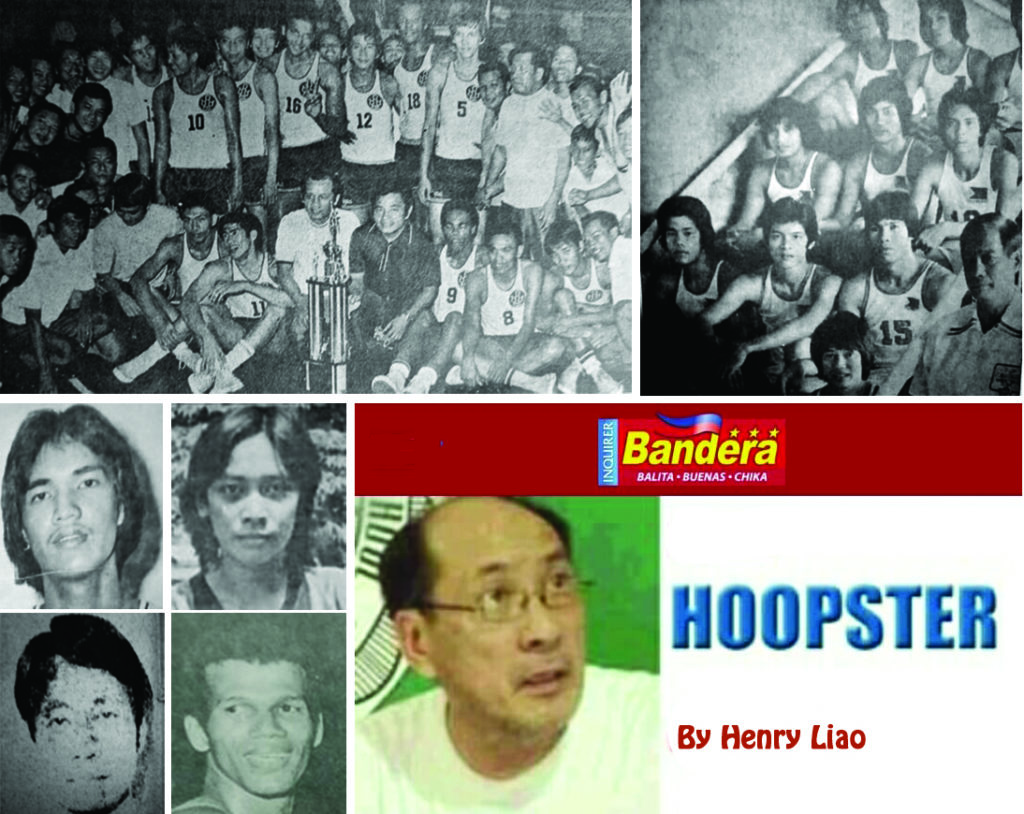
The game being the national pastime of many Filipinos, it is no small wonder that there have been many prominent athletes in local basketball history, whether it be in the collegiate, amateur/professional ranks or international competitions, since the sport was invented by Canadian James Naismith in Springfield, Massachusetts in December 1898.
With this Baby Boomer in home quarantine since March 15, and unable to move outside of my residence except to take a walk for a few minutes from time to time due to my SC status, the stay-at-home restrictions allowed me time to search for skeletons in my basketball library and do some research on the subject.
Join me then in this test of wits to find the identity of some of the prominent Filipino roundballers from the past.
THE QUIZ (part 10)
91. The Women’s Liberation movement started in the late 1960s and lasted throughout the 1980s.
Early in the era, even local basketball became more popular when it was smitten by the feminist movement.
Women started playing the so-called “manly” game. And some of the most beautiful ladies in town took up the sport.
I was a basketball-crazed teenager at the time and even now, at my elderly years, I still can’t get off my mind an alluring female cager by the name of Isabel (Isa) Valles of Maryknoll College (now known as Miriam College).
Valles was a statuette mestiza (my kind of a woman) and she later skippered the Philippine women’s team to the 1972 Asian Youth Basketball Championship held in Manila.
An exaggeration it might have been, it was said that what a male athlete can do, its female counterpart can do it as well – perhaps even better.
It was an issue that was being debated by young hoopsters across the country in 1970 when the Women’s National Collegiate Athletic Association first saw the light of the day.
Among collegiate standouts at the time was the flamboyant two-time NCAA MVP (1970-71) Fortunato (Atoy) Co Jr. from Mapua Institute of Technology with his patented turnaround fadeaway jumpers.
Overlooked at the time was that on the distaff side, there also was a spriingly-jumping collegiate cagebelle from Chiang Kai Shek College who was setting the Women’s National Collegiate Athletic Association (WNCAA) on fire with her scoring prowess.
For a while one would think that this subject was a sister of Atoy for they have the same surname.
No, they are not related in any way. Yet, both were prolific from the offensive end that netting 30 points in a game was simply par for the course.
This 5-3 forward-guard saw action in the WNCAA from 1970-75. She powered CKSC to the championship in each of the league’s four seasons (1970-71-72-73). University of the Philippines dethroned the Lady Blue Dragons in 1974 but a year later, CKSC was back on the WNCAA throne even as the Lady Maroons only had seven holdovers on the roster and paraded with eight new players, including Rita Henson.
The CKSC superstar with the No. 10 jersey finished her distinguished collegiate tenure with three WNCAA MVP hardware and four WNCAA titles.
She also was a member of the Philippine women’s team that took part in the 1972 Asian Youth Basketball Championship held in Manila.
This feminine basketballer from the Chinese-Filipino school was truly a legend in her own time and perhaps the most explosive, if not decorated, female player in Philippine cage history.
What is her name? Her initials are GC.
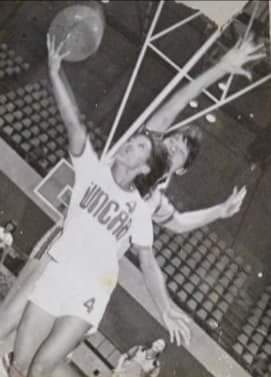
92. Okay, girls just wanna have fun. It was the Women’s Liberation Movement era from the late sixties to the eighties and musician Helen Reddy come up with the equal rights-themed 1971 ditty “I Am Woman” and hear her roar the movement did.
Local basketball was abuzz, too, with the birth of the female version of the National Collegiate Athletic Association, the Women’s NCAA league, in 1970.
Chiang Kai Shek College, powered by super shooter Gloria Co, dominated the WNCAA during its early years, stringing together four consecutive titles …. until the University of the Philippines, coached by national team veteran Felicisimo (Fely) Fajardo and his assistant Emilio (Jun) Bernardino (yes, the former stocky Maroons guard who later became the “Man on the Ball” courtside reporter during the TV coverage of the PBA in its early years and then rose to become the league commissioner), broke through in 1974.
In the finals, this pesky and fast-running player defended Co well and gave her a lot of fits.
Deservedly so, she earned WNCAA MVP honors that year as the UP Lady Maroons dethroned four-time titlist CKSC.
The Lady Maroons finished the 1974 season unblemished in 10 assignment, including a 48-47 win over the Lady Blue Dragons on November 3, 1974.
What is the full name of this 5-3 forward-guard who was voted the 1974 WNCAA Most Valuable Player? Her initials are MDR.
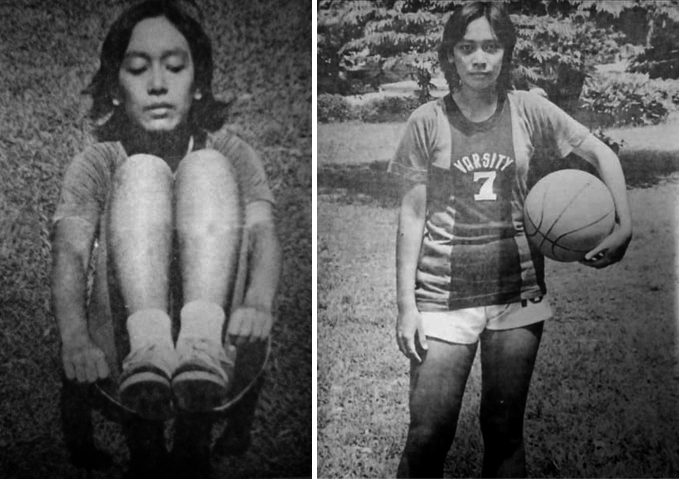
93. Physical violence in a basketball game is unacceptable. Sure, there have been a lot of times that physicality – at times bordering on roughhousing tactics – has taken over due to the players’ intensity and competitiveness.
And there were also the bad calls from the referees. Still, these violent acts can never be tolerated nor justified.
There have been a number of cases of hardcourt hooliganism in recent decades, including those in the pro league PBA from 1975.
But what perhaps was the most-publicized hardwood brawl in local basketball history came even before the PBA existed. It happened way back in the premier amateur commercial league known as the Manila Industrial and Commercial Athletic Association (MICAA).
In December 1971, in an explosive MICAA All-Filipino finals between the heavyweights Meralco Reddy Kilowatts and Crispa Floro Redmanizers, a full-blown melee erupted halfway through the second half of the rugged affair that was witnessed by an overflowing crowd at the Rizal Memorial Coliseum.
Months before in July, Meralco, mentored by legendary great Lauro Mumar, defeated Virgilio “Baby” Dalupan-coached Crispa, 65-58, in the MICAA Reinforced (Open) finals
No, it was not a player-to-player fracas that happened. Rather, it was all about the mauling of a referee by two Meralco players.
Crispa was ahead, 65-50, with 12 minutes remaining in the second half, as head coach Lauro Mumar and Meralco allegedly was getting the shorter end of the officiating. All hell broke loose when one Reddy Kilowatt was whistled a charging foul by referee Jose “Joe” Obias off Crispa’s Rudolf Kutch. (The other whistletooter was Dr. Edilberto “Ting” Cruz) off Crispa’s Rudolf Kutch. Taking umbrage, this furious “Big Boy” chased Obias in anger over the perceived questionable call.
A teammate of his then struck a running Obias in front of the Meralco bench before the duo ganged up on him in a free-for-all.
The two were later ejected from the game that was never completed. There were other Meralco players such as the coach’s son, Larry, and the younger brother of this “Big Boy” named Cristino that took part in the melee but they were given lighter penalties.
But the brunt of the punishment was meted against the two principal instigators – one monikered “Big Boy” for his burly frame and the other the “Big J” named as such probably to remind us of Hall of Fame-bound Oscar Robertson as the “Big O” in the NBA.
The MICAA issued a two-year ban but the national basketball federation at the time, the Basketball Association of the Philippines (BAP), raised the ante by slapping a lifetime ban against the pair.
After an 18-month suspension, the lifetime ban on the two national team members was lifted. By mid-July of 1973, the pair had hooked up with a new commercial club owned by the Delta Motor Corporation, the Komatsu Comets.
The club soon was renamed the Toyota Comets when they beat Concepcion Industries, 2-1, in the best-of-three-MICAA Reinforced (Open) final series in their maiden campaign in the league.
What are the names of the two players that were once slapped a lifetime ban?
Their initials are RJ and AR.

94. Here we go again. How can one recall the tradition-steeped Philippine basketball history without often touching on the Crispa Floro legacy?
In this photo is the much-vaunted 1970 Crispa team that dominated the premier commercial amateur leagues, emerging victories on four occasions, including the National Senior Championship and its first All-Filipino MICAA crown at the expense of the San Miguel Braves to finish with a perfect 13-0 record.
I am sure you know the dreaded import duo of the Redmanizers were Paul Scranton and Tom Cowart, and you can easily identify once more all the locals on the team. Manny Jocson, from the fabled Ysmael Steel unit that disbanded in 1968, was the Crispa skipper.
In just two years, the Crispa dynasty disintegrated, however.
In 1973, six players from the team were booted out of the roster by team manager Danny Floro for their involvement in point-shaving and game-fixing activities during the MICAA All-Filipino tournament, specifically the finals series opener against Mariwasa Akai, a championship series in which the latter eventually won over heavily-favored Crispa.
Tell me then the names of the six dishonored players. Clue: their initials are AP, RK, DF, JA, EDL and RA.
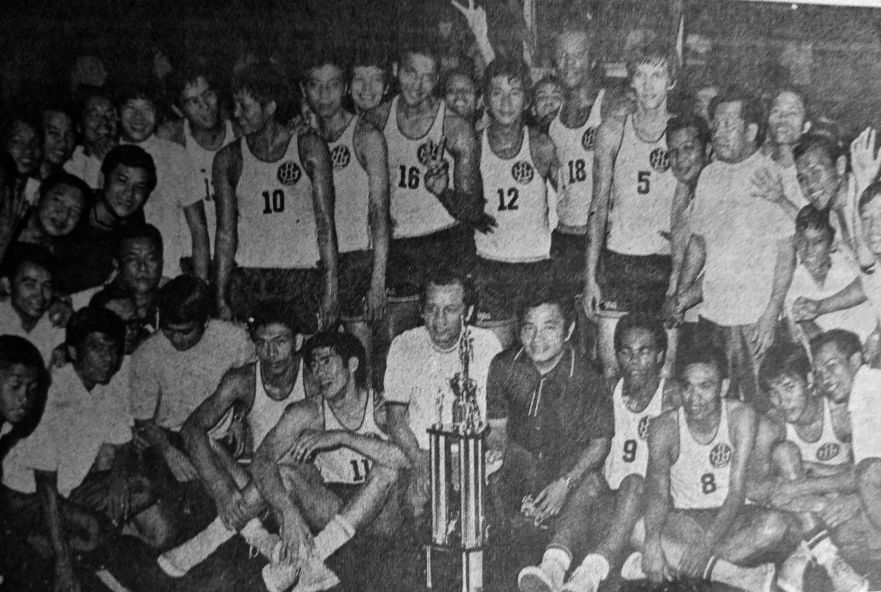
95. This should be easy if you are Crispanatic. Long before it became a perennial powerhouse in the national commercial leagues starting in 1970, the Crispa Floro Redmanizers were known by a different club name. What was it?
The second question, which should be real hard: Who was the first head coach of this Crispa franchise when it joined the commercial circuit in 1956-57 and won in the inaugural season of the Businessman’s Athletic Association (BAA) that year?
Legendary coach Virgilio (Baby) Dalupan only formed a partnership with Danny Floro in the mid-1960s after piloting UE to seven straight UAAP championships during the decade.
The 1956-57 championship unit included three Olympians in Eddie Pacheco, Carlos Badion and Mike Littaua.
The team, under this pioneer head coach, took part in the BAA only for three seasons before joining the MICAA.
In the photo, this coach is standing in the second row in white shirt. What is his name? His initials are CB.
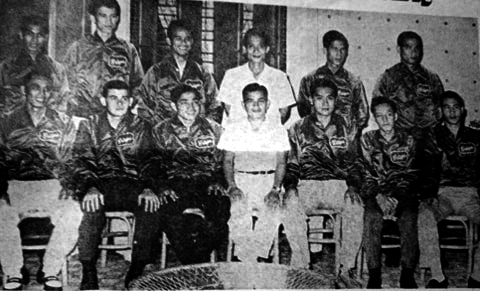
96. An Ateneo vs. La Salle encounter, whether before (in the NCAA) or now (in the UAAP), is bound to be a box-office hit always.
During the 1974 NCAA season, the two schools duked it out thrice and the Green Archers won all of them, including one for the second-round flag.
In the photo, King Archer Lim Eng Beng (No. 14) is sizing up the defense of the Blue Eagles skipper.
What is the name of this Atenean wearing jersey No. 4? His initialas are GV.
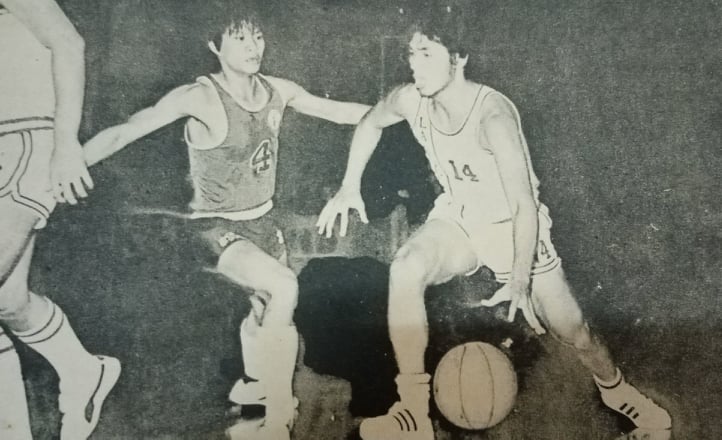
97. Local basketball history for Baby Boomers (born 1944-1964) like me can be a blur at times.
Who was the head coach of the Ateneo Blue Eagles when they copped the 1969 NCAA crown behind a star-studded roster that included Marte Samson,
Francis Arnaiz, Rafael (Baby Boy) Morales and Ricardo (Joy) Cleofas?
This bench tactician also steered the Letran Knights to the 1966 NCAA diadem after playing for the Muralla squad in 1950 when the team was monikered “Murder, Inc ” and grabbed the NCAA crown that year behind all-time great Lauro (Bay, The Fox) Mumar.
He was also the head coach of the Toyota (nee Komatsu) Comets that won the MICAA Open title in their maiden season in 1973, beating Concepcion Motorolas, 2-1, in the finals. That Comets team included young acquisitions Francis Arnaiz and Ramon Fernandez and national team veterans Robert (Sonny) Jaworski and Alberto (Big Boy) Reynoso.
This same coach, along with Carlos Loyzaga, served as an assistant to head mentor Valentin (Tito) Eduque during the Philippines’ gold-winning finish in the 1973 Asian Basketball Confederation (ABC) tournament in Manila.
He was the head coach of the RP women’s team to the 1972 Asian Youth Basketball Championship held in Manila.This bench tactician also piloted the Philippine team, backstopped by Alfredo Hubalde, to the title in the 1974 Asian Youth Basketball Championship. The Filipinos, defeated South Korea, 89-79, in the finals.
What is the full name of this coach?
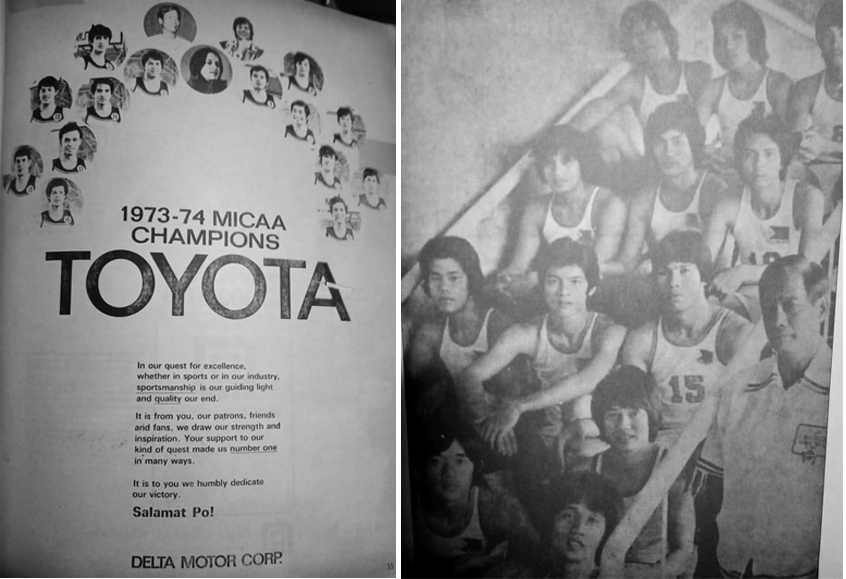
98. Wow, two imports battling it out in MICAA action in the early 1970s.
One played for the Yco Painters. The other suited up for the Yutivo Opels.
One was a Caucasian and the the other was an African American.You’ve got to be an all-time hoops chronicling junkie if you can identity these two Americans.
What are their names? Their initials are ES and AS.

99. This boyish-looking 6-4 center-forward attended Holy Angel College of Angeles, Pampanga before moving to the Big City to matriculate at Jose Rizal College.
He latched on with Manilabank in the MICAA, and was on the Golden Bankers unit that lost to the Yco Painters in the finals of the 1975 MICAA tournament.
That same year, the Angeles City native was named to the Philippine nation team that competed in the Pesta Sukan festivities.
A year later, he helped Manilabank gain revenge with a victory over Yco in the MICAA finals. Months later, following the loss by the Painters, their top backcourts stars Miguel Bilbao and Freddie Webb left the club’s amateur ranks and jumped to team owner Don Manolo Elizalde’s pro franchise, the Tanduay Distillers, in the second conference of the 1976 PBA wars.
This lanky fella made it to the PBA in 1976 and spent two seasons with the Toyota Tamaraws. He was the pro circuit’s Rookie of the Year Awardee in 1976 with a pedestrian 5.5-point average in 49 games.
He later spent time with Honda, Gilbey’s Gin, and U-Tex until 1980. In five PBA campaigns, he normed 7.1 scores in 118 games.
What is his name? His initials are VC.
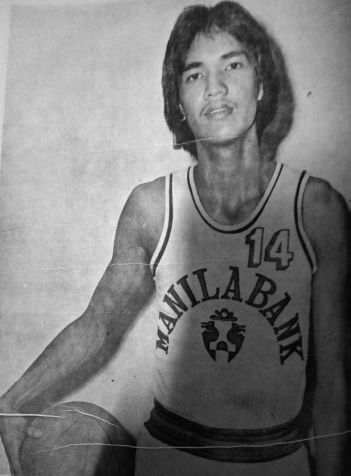
100. On July 18, 1975, the Yco Painters beat the Manilabank Golden Bankers, 72-69, at the Rizal Coliseum to regain the MICAA crown.
Led by guards Miguel Bilbao and Freddie Webb, who was coming off a knee injury, the Ed Ocampo-coached Painters went 10-0 in the prestigious competitions.
The MICAA MVP hardware, though, went to a Manilabank player from Colegio de San de Letran as shown in the photo.
What is his name?
This 5-10 forward-guard helped guide Colegio de San Juan de Letran College to the 1970 NCAA crown. He suited up for the Royal Tru-Orange Orangemen when the PBA unwrapped in 1975.
The Paranaque City-born shooter then moved to the Toyota Tamaraws the following campaign before hanging up his jersey.
In two seasons and 52 games, the national teamer for the 1975 Pesta Sukan games in Singapore hit at a 6.6-point clip.
What is his name? His initials are RH.
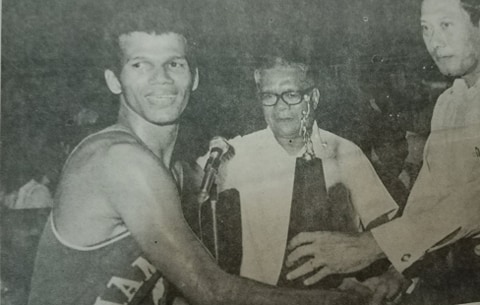
* * * * *
THE ANSWERS: 91-Gloria Co; 92-Ma. Diana (Nena) Ramos; 93-Robert (Sonny) Jaworski and Alberto (Big Boy) Reynoso; 94-Adriano Papa Jr. (in photo), Rudolf Kutch, Danilo Florencio, Johnny (Billy) Abarrientos, Ernesto De Leon and Reynaldo Alcantara; 95-Crispa Florotex coach Cesar Baldueza; 96-Gerardo (Gerry) Verzosa; 97-Nilo Claustro Verona; 98-Yco’s Earl Seyfert and Yutivo’s Al Soares; 99-Virgilio (Gil) Cortez; and 100 Rudolf Hines.
Disclaimer: The comments uploaded on this site do not necessarily represent or reflect the views of management and owner of Bandera. We reserve the right to exclude comments that we deem to be inconsistent with our editorial standards.


